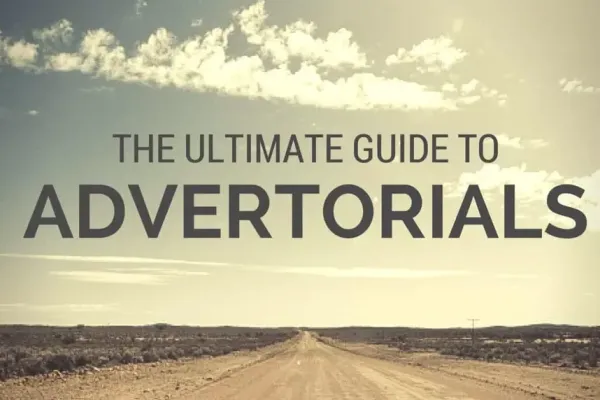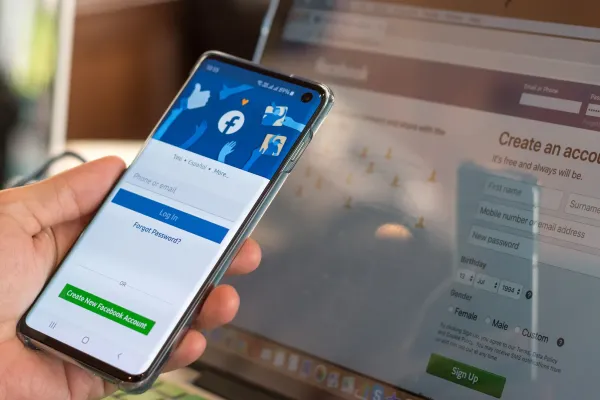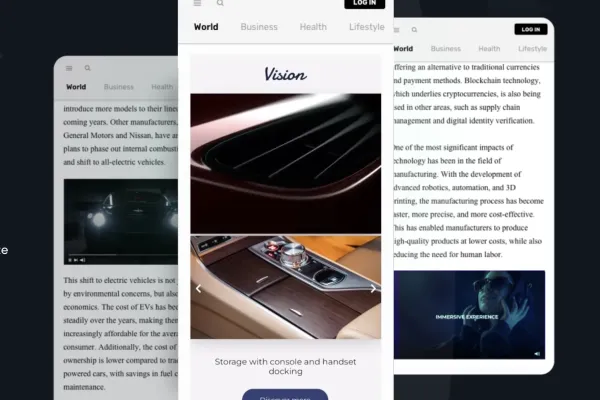Tom Jenen, President of Polar, shares insights on how premium publishers can price, package and sell branded content including which metrics that count and which formats to choose as well as his and Polar's definition of native advertising versus branded content.
Tom runs the global business of Polar, the branded content technology partner to some of the world’s largest premium publishers, including AOL, BurdaForward-Ad Group, Telegraph (UK), News UK, Huffington Post, Condé Nast, Economist, Auto Trader, Gannett, Refinery29 and many others, helping them strengthen and build their direct-sold branded content business and much more.
The interview was recorded at the 2016 Native Advertising DAYS - learn more about this year's amazing conference here.
Below are highlights from the interview which have been slightly edited for clarity.
Native advertising is just one promotional method
"When you look at a website and you see content that is in-feed and promotes content that's a native ad. But it's really just a format. Branded content is the overall product which includes the content page or the video and the entire program that you're putting together.
RELATED: Why Native Will Win As Paid Distribution Channel
Native advertising is just one promotional method. So you might also promote that content using Facebook or other content recommendation engines, organic, social, SEO, partnerships that you have."
The 3 flavors of branded content
"Premium branded content generally comes in three different flavors. One would be sponsored editorial where the editorial team is writing the content and you get a sponsor for that content. Every publisher does this already. That's very much at the top of the funnel where you're trying to promote awareness of that brand by linking it to really powerful content.
The second flavor would be custom content. That is a light or a heavy integration of the brand with the content. So a publisher will engage with their content studio or their editorial team and create content in partnership with the brand. It can be extremely powerful for people up and down that funnel depending on where you want to engage with people.
What ties them together is that the value for the client is in getting people to come view that content.
The third part is partner content where the client or the partner has created content already but they struggle to get people to view it. So they partner with a publisher to host that content and distribute it and get people to come view it.
RELATED: "Clicks and Followers Are Just Vanity Metrics"
In each one of these cases what ties them together is that the value for the marketer or the value for the client is in getting people to come view that content. So it's generally priced on a cost per view (CPV) basis."
How to price native advertising
"You price and package native advertising today based on whether you're selling it as media or you're selling the entire content program. If you're selling just the media; if you're basically running a content flavored display ad, then you might sell it on a CPM (the advertising cost per thousand views, ed.).
But if you're trying to sell an overall content package you want to do it in a way that helps the agency and the marketer to compare those programs across providers. Especially if you're a publisher you want to talk about the value of your content and your ability to create premium packages.
Essentially you take the value of the overall sponsorship package and look at how many people are going to see that content.
So it would help to have a CPV. Essentially a CPV is you take the value of the overall sponsorship package and look at how many people are going to see that content? How many views will you have to that content? And then just divide. So with that CPV, it should be easy to compare your package across other ways that the marketer might want to execute that program."
RELATED: How To Sell Native in a New and Better Way
Metrics that you need to
"Metrics for native advertising and branded content have changed over time. Early on it would just be a sponsorship package and "give me whatever metrics you have". Some people still sell native ads as media but you're still bringing the value of the entire content package down to the CPM.
These days more and more it's being sold on a CPV basis and going forward people are really looking at all the other metrics that help them to understand the level of interaction that the target audience is having with that content.
Cost is only part of it. You're really looking at average time spent with that content
So viewability matters quite a lot, full plays; how long did people get through that video? So you're looking at all the different metrics you can bring to it. Cost is only part of it. You're really looking at dwell time or average time spent with that content."
Publishers have to know how marketers measure success
"Let's not mix up native advertising and branded content anymore. Let's really look at native advertising as a thing that the big platforms now own. They've turned it into just a pure ad format. What that means for most publishers is declining yields and it goes programmatic over time.
If you really want to understand your branded content business and how you can keep adding value to the marketers' objectives and really provide a fully premium custom product which allows publishers to get higher margins and marketers to get much better results for their campaigns.
RELATED: Why Mobile Native Must Run Programmatically to Succeed
Also, understand how to package in price on a CPV basis. CPV is not something that most publishers are used to doing all the time but once you look back at your past campaigns and break them down to what that CPV really looks like, you can have a clearer understanding of how the agencies and marketers might look at the results of that campaign. Then you can start working on how to guarantee the right number of views and meeting those expectations.
Make that experience a really good one and they'll come back and keep buying
The last thing is to take a hard look at the results that you're generating and the experience that you're creating for marketers and agencies. The client really does want great results but more importantly, they want to have a great experience in producing and delivering this campaign.
Chances are the content is going to be far and away better than what they're able to do on their own. So this is going to be the centrepiece of the package. So make that experience a really good one and they'll come back and keep buying."
CPV is higher for articles than for videos
"I think one really interesting thing [our research shows] is that the CPV of content overall globally on article content is higher than it is for video content. Most people look at video and think of that as a very premium product and it is. It takes a lot of effort and energy to make really high-quality video.
And yet because there's a large social network out there who has unlimited video impressions the fact is the price is lower. And so it ends up depressing overall what marketers and agencies are willing to pay even for high-quality video.
RELATED: Here’s The 3 Main Trends For Native Video
Also really surprising is the difference in click-through rate from desktop to mobile. Mobile is extremely high performing and yet when you talk to many publishers sometimes they're not running their native on mobile at all. Or if they are, they're not running it in all of the different places they can go. They are not necessarily running it under Google AMP or Facebook Instant Articles pages.
Click-through rates from native is extremely high and the dwell time is double what you would get from desktop.
They may not be running it in their newsletters. In fact, we find that most publishers aren't. And yet when you run native in newsletters your clickthrough rate from these very engaged audiences is extremely high and the dwell time is double what you would get from desktop.
RELATED: "It Is Time Ad-Tech Stands up for Itself"
Programmatic is a struggle that doesn't pay off
"Some publishers struggle with native because they start off with native actually thinking programmatic and how can I enable that and make that work?
We think this is a problem for most publishers. They then have to do the hard work of building that premium branded content business, because unfortunately there's no substitute for building a really strong direct business with marketers.
You want marketers to really understand why they should pay you a premium. You can't do that programmatically
You want to have that close relationship. You want them to really understand why they should pay you a premium. You can't do that programmatically. I've spent a lot of time in my career trying to make that happen and I find that it's a struggle that doesn't really pay off.
So I would advise any publisher out there to start thinking about how to invest properly in building that direct sales business because it's high margin and it gets you in very close contact with the marketer and actually gets you closer to the user as well. So it's a way that you can grow that publishing business and get it back on track."
Interview by: Stine Andersen
 By
By 



